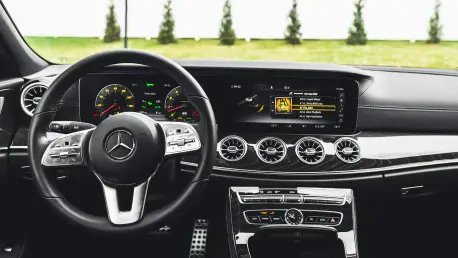Recent discoveries in automotive cybersecurity present a critical viewpoint on Bluetooth technologies in vehicles, highlighting vulnerabilities that could compromise millions of transport vehicles worldwide. With Bluetooth becoming an integral component of modern vehicular infotainment systems, understanding these risks is essential for both manufacturers and consumers.
Context of Bluetooth Integration in Vehicles
Bluetooth technology has evolved significantly since its inception, emerging as a key enabler of connectivity within automobiles. Initially designed to provide hands-free calling and simple media streaming, its integration has scaled to encompass advanced infotainment controls, navigation aids, and communication across multiple devices. As cars become more networked and autonomous, the significance of Bluetooth technology thrives, promising enhanced driver experience and road safety. However, as its applications diversify, so do the vulnerabilities that accompany them.
Analysis of PerfektBlue Vulnerabilities
Examination of Identified Issues
The discovery of the PerfektBlue vulnerabilities within the OpenSynergy BlueSDK Bluetooth stack underscores a grave security concern for several major automotive manufacturers, including Mercedes-Benz, Volkswagen, and Skoda. Researchers from PCA Cyber Security identified four pivotal flaws capable of facilitating remote code execution. Each flaw—ranging from Use-After-Free in AVRCP to incorrect function termination in RFCOMM—contributes to a potent exploit chain with severe implications. These vulnerabilities are not mere theoretical threats; they offer entry points for attackers to potentially control infotainment systems, with risks extending towards unauthorized feature access.
Real-World Exploits
Notable case studies provide tangible context for these vulnerabilities. The Nissan Leaf incident revealed how exploiting Bluetooth interfaces could bypass secure processes, raising alarms over vehicle control systems’ susceptibility. Similarly, Pen Test Partners illustrated the ease of manipulating Renault Clio’s systems using its CAN bus data, reconfiguring vehicle hardware into unintended applications. These examples underline the urgency of embedding robust security into automotive systems to prevent such innovative yet hazardous exploits.
Recent Developments and Security Focus
In response to these threats, significant strides have been made in bolstering Bluetooth security across the automotive industry. There is a distinct and growing shift towards preventive measures, including sophisticated encryption protocols and rigorous validation processes. Automakers are increasingly attentive to designing IVI systems that are well-partitioned from the car’s critical controls, ensuring that a breach in one area doesn’t cascade into broader system compromises.
Impact and Implications for the Automotive Industry
Vulnerabilities within vehicle Bluetooth systems not only threaten consumer privacy and safety but also pose substantial risks to automotive brands’ reputations. Cyberattacks leveraging Bluetooth weaknesses can serve as cautionary tales for the industry, emphasizing the necessity of vigilant security posture. The exposure of such vulnerabilities compels manufacturers to consistently update systems and fortify defensive strategies against an evolving threat landscape.
Challenges and Future Outlook
Securing vehicle Bluetooth technology presents both technical and regulatory hurdles. The integration of robust security measures at the design phase can be complex due to legacy systems and the vast number of interconnected components involved. Moreover, the landscape of vehicular regulatory standards is continually evolving, which complicates consistent adherence across different markets. Nevertheless, the future of Bluetooth in vehicles is promising, with an enhanced focus on continuous improvement in cybersecurity practices, laying the groundwork for more secure automotive environments.
Concluding Remarks
The emergence of PerfektBlue vulnerabilities served as a wake-up call for the automotive industry, underscoring critical lapses in vehicle security infrastructure. While proactive measures and recent patch implementations have significantly reduced immediate threats, the revelations have ignited an ongoing dialogue about safeguarding vehicular networks from future exploits. Automakers must commit to more sophisticated security protocols and foster ongoing partnerships with cybersecurity firms to stay ahead in the rapidly advancing technological landscape.









